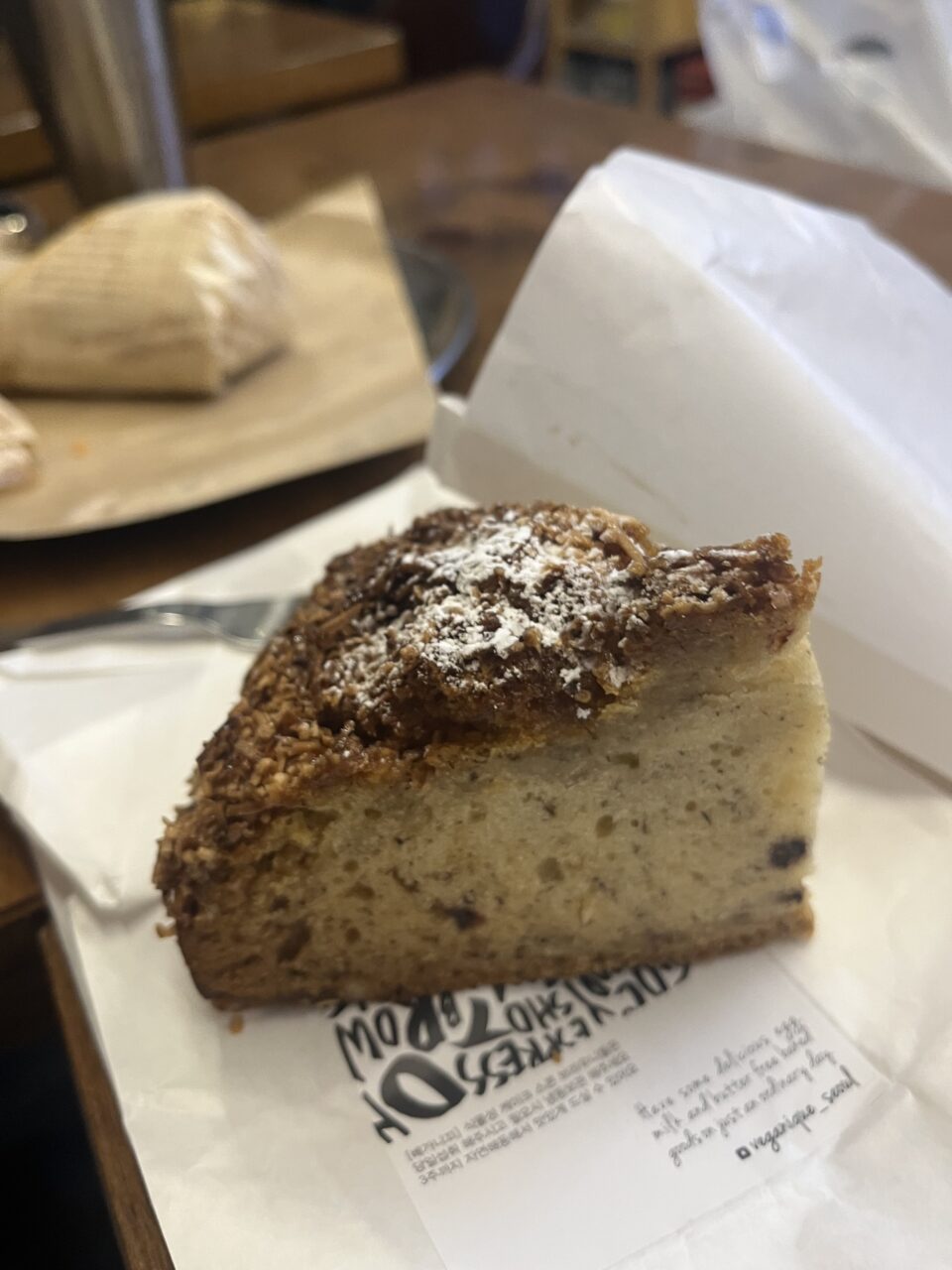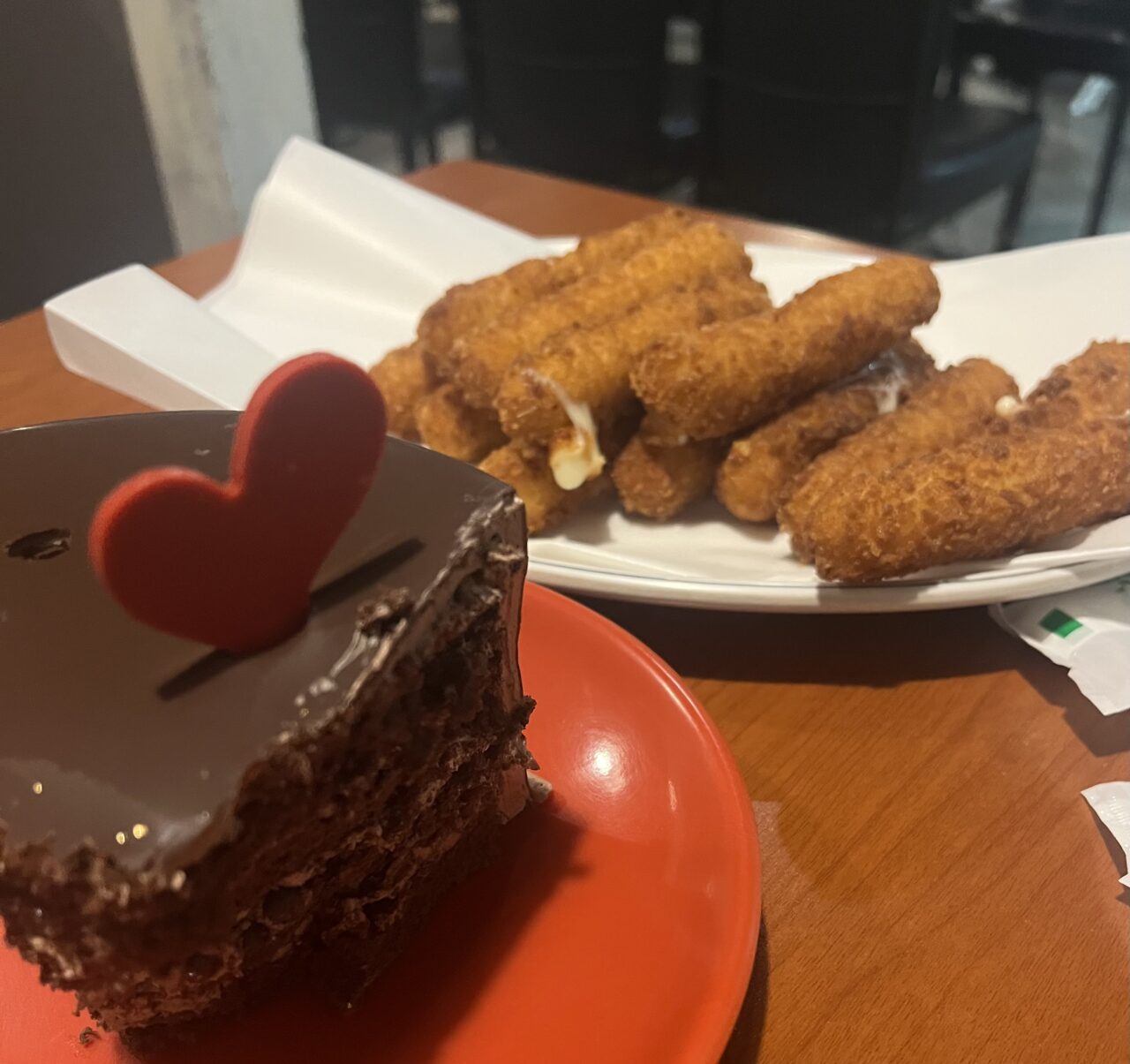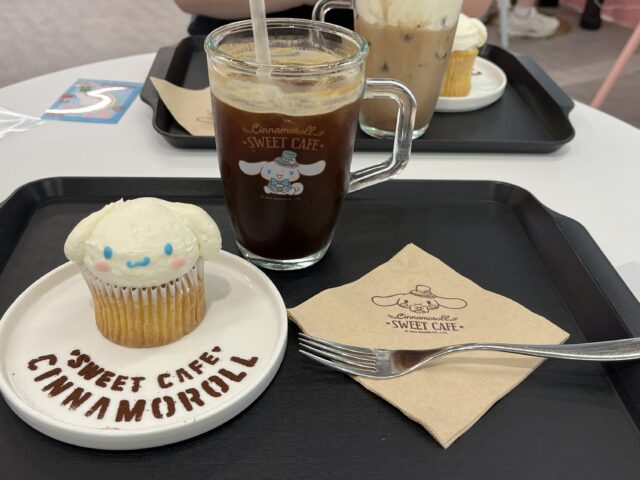After enjoying my delectable vegan airplane food, I was quickly met with a new challenge: my first meal in South Korea as a vegan. When I arrived at the airport, I joined people from the TEAN program for dinner, and I got rice porridge, which I think was vegan.
Korean food doesn’t come with a complex laid-out ingredients list that describes every mineral and molecule in the food. Usually, there’s just a name and sometimes a vague picture on a menu, so I often didn’t even know what I was eating. While asking what’s in a dish is an option, it’s difficult for someone who doesn’t speak Korean. The most I will do is ask if a dish has meat in it or if there are any options without meat. In Korea, it isn’t a cultural norm to ask for specific ingredients to be taken out of a dish, so while most restaurants probably could take an ingredient out for allergy purposes, it is still a rare occasion for special requests to be made.
I knew before coming here that most Korean foods have meat or seafood in them. Even kimchi usually has fish oil in it. The gamja-jeon (감자전), which is a Korean potato pancake, still sometimes has pieces of seafood in it and tteok-bokki (떡뻑이) dishes, which are rice cake-based, are often served with fish cakes.

I wanted to test if I could be vegan in Korea at first and even though I gave it a good try, I quickly gave up. It’s the culture here to always eat out at restaurants, order takeout, or eat convenience store food. It’s a social event and I like to eat at least two gratifying meals a day. Cooking for myself would be difficult and, because I constantly have to eat, and finding food free from dairy, eggs, and meat is really difficult already, being completely vegan is unrealistic for me right now. I’ve been vegan for the past five years so the thought of eating fish, egg, or dairy products felt very daunting, but I had to reevaluate my boundaries and find new foods to be comfortable eating.
When I was 16, I watched a video of dairy cows being slaughtered that completely flipped my perspective and how I look at food. I did an extensive amount of research on animal agriculture and went vegan soon after. Honestly, the thought of millions of animals dying every year while I couldn’t do anything about it made me feel really sad and hopeless at first. It took a while to adjust to my new mindset, but over time, I thought about animal cruelty less, and being vegan just felt natural to me.
So now, readjusting to eating these foods again mentally was challenging, but the fact that the food tastes good helped a lot. I slowly tried eating dairy products and foods with eggs in them. I had potato soup, pizza, sandwiches with veggies and cheese, waffles, mozzarella sticks, and more. My options opened up immensely and I was able to consume enough calories every day. Honestly, I was obsessed with cheese before I went vegan, so there was a comforting nostalgia to it too.

I struggled to mentally juggle the idea of not seeing cow’s milk as weird and disgusting because it literally comes from a cow, and now I have to eat it. I still don’t eat eggs by themselves because it feels awkward and frankly, the amount of cholesterol still intimidates me, but in waffles or cakes, it’s out of sight and mostly out of my mind.
I ideally wanted to be vegetarian because I don’t have any desire to eat meat, but fish products are in everything. I don’t enjoy the flavor of seafood, so my new rule, which mainly applies to kimchi, is that as long as the food doesn’t taste fishy, I’ll eat it. When it tastes too much like fish, it reminds me that I’m eating fish, which I dislike because then I think of the fish that died.
While I could be stricter and try to limit my non-vegan food intake as much as I can, I’d rather just eat comfortably for now and give myself an achievable realistic boundary with wiggle room, rather than try to scrounge for a vegan meal every time I have to eat.
Also, while usually being a vegan is a priority to me, it’s so difficult here that I cannot prioritize it anymore. I still always get the plant milk option in my coffee when it’s available, and I will still get the most vegan option on the menu if there is one. But besides that, the struggle is too much while I am trying to enjoy my experience studying abroad. In Korea, my nutritional priority is not being hungry, which is very easy to do with cheese.
It’s reassuring to know that I can adapt to a broader diet if I need to, especially for my future travels. I’ll always try to be vegan if I can, but if it gets unrealistically difficult, especially in a non-English speaking country or one that is particularly meat-based (both apply to Korea), then I’ll readjust my diet and set new boundaries again.
What I feel does make an impact on veganism in Korea is supporting vegan businesses, which I do every time my friends and I are in a new neighborhood. I pull out the Happy Cow app and see if there are any vegan-friendly businesses near me. Then I’ll go and splurge as much as I can so the businesses can continue supplying delicious vegan food options.

I have now been vegetarian for over a month and I am getting better at it every day. It is nice to be able to eat birthday cake with everyone at a birthday party or be able to share a pizza with friends, but I am very much looking forward to being as vegan as I used to be when I go back to my home country.

Adrienne Povey, University of Massachusetts Amherst, is studying abroad in South Korea with TEAN.







